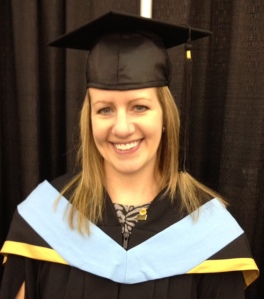
I have spent most of my teaching career in French Immersion, first as a classroom teacher in middle school and now as an administrator. Over the years I have heard and in some cases have even taken part in perpetuating some of the following myths about the French Immersion program. In this blog post I hope to dispel some of the these myths based on my own experience and offer a few suggestions to ensure success for all students in French immersion.
Myth 1
French immersion is a program for elite students who are academically gifted, possessing a solid work ethic, and a love of learning.
Reality – We do have academically gifted students in FI who do very well in school but we also have students with learning disabilities, medical diagnoses such as ADHD and autism and students who are “average”. We have students who love school and students who are not so inclined. We have students with varying work ethics. In short, we have a diverse clientele, all of whom deserve the right to learn a second language and become bilingual.
Myth 2 – French Immersion students generally come from higher socioeconomic (SES) backgrounds because students from lower SES backgrounds cannot be successful in French immersion.
Reality – The SES profile of a french immersion classroom is no different than an english program classroom in a similar neighborhood. Though generally, students from lower SES backgrounds tend to struggle more than those from higher SES backgrounds, the research says that “students from low SES backgrounds in immersion perform just as well in English-language development and academic achievement as do students from the same SES backgrounds in English-language programs” (Genesee, 2012, p.5).
Myth 3 – Students with academic challenges or disabilities should not be French Immersion students because it is hard enough learning one’s first language, never mind adding the stress of learning a second.
Reality – “Below-average students in immersion perform at the same level as do below-average students in English-language programs” (Genesee, 2012, p.5). Research does not suggest that students who struggle academically will have greater struggles in immersion than in English programs. As a French immersion administrator, I have seen this time and again when students who are struggling in immersion leave the program and enroll in an English program only to find that they are experiencing the same academic difficulties they encountered in immersion. Learning is learning and students who struggle with for example, reading comprehension, are not going to magically “get” reading comprehension because what they are reading is in English.
Next steps
Dispelling the myths around french immersion will take time. These myths are fairly deeply engrained within the culture of french immersion schools including the attitudes of teachers, administrators, and parents. In the past, students who have been identified as struggling in French immersion were allowed the possibility and even encouraged to leave the program and “switch” to English. My question for those who want to switch out and to teachers, parents, and administrators who encourage this practice is: when the student continues to struggle in the English program (as they inevitably will) where will they go? One cannot “quit” the English program as one can “quit” French immersion.
When a student is contemplating leaving French immersion, it is essential to call a team meeting which includes the student, parents, teachers, administrator and sometimes the school counselor . There are always deeper issues than the student not liking French or the student struggling because of “the French”. It is our job as educators and administrators to provide learning services to support all students whether they are in English or French immersion.
After the team meeting, it is important to create a program of support for the student. My other hat in my job is learning assistance teacher for French immersion students so it is my job to help students pinpoint their needs and then help them with those needs. My only frustration right now is that I do not have more help. It is very difficult in the city where I live to find French immersion educational assistants and I would sure love to have one!
In addition to individual help, teachers of French immersion need to become skilled at differentiating instruction and learning activities. One of the great strengths of the French immersion program is the focus on vocabulary acquisition, repetition and oral development. These are areas where teachers can begin to differentiate to suit individual student needs. We must begin to make decisions about teaching and learning in French immersion based on what the research says about language acquisition as well as striving for inclusive French immersion programs which meet individual learning needs.
Above all, it is important to change our attitudes around what it means to experience success in French immersion. We need to ask what it means to be bilingual? For some students this is full functional bilingualism with the ability to read and write comparably in French and English. For others, this may mean being able to carry on a conversation in French or use their oral language skills for travel and work. Success in French immersion might look different for each student.
French immersion is no longer a program of the elite whether academically or socio-economically nor should it continue to be.
Genesee, F. (2012). The Suitability of Immersion for All Learners: What Does the Research Say? The State of French Second Language Education in Canada [Executive Summary]. Canadian Parents For French. Retrieved from http://cpf.ca/en/research-advocacy/research/the-state-of-fsl-education-in-canada/








